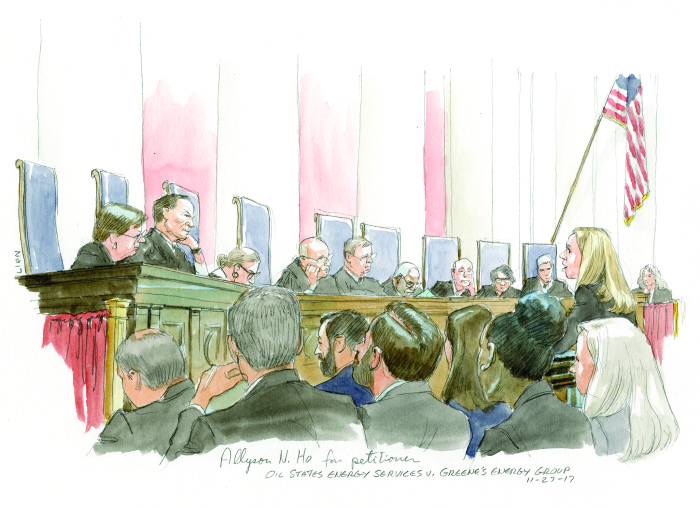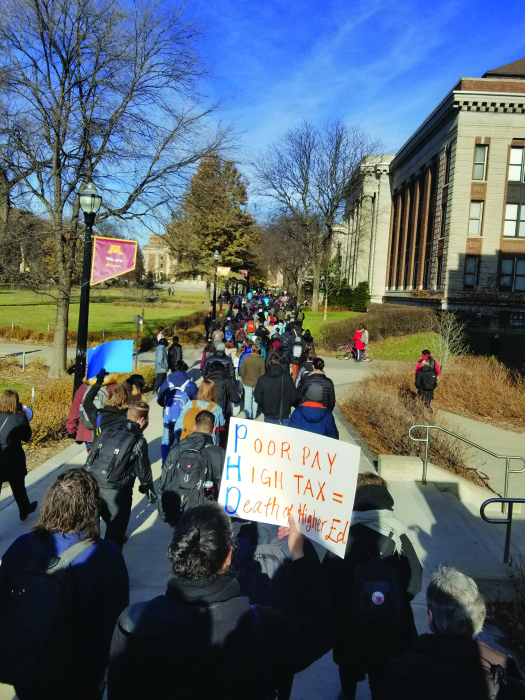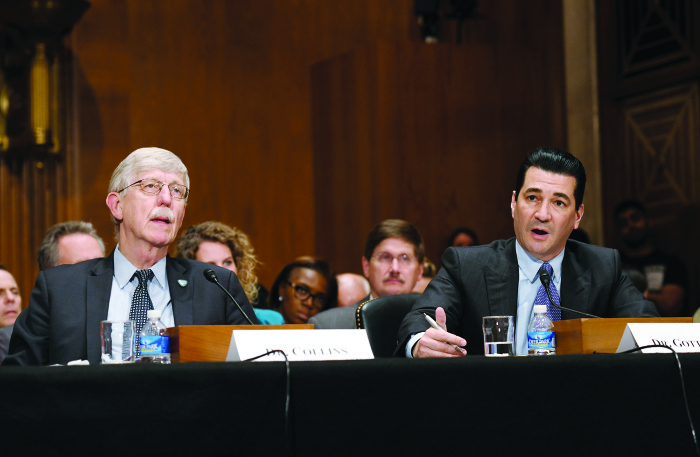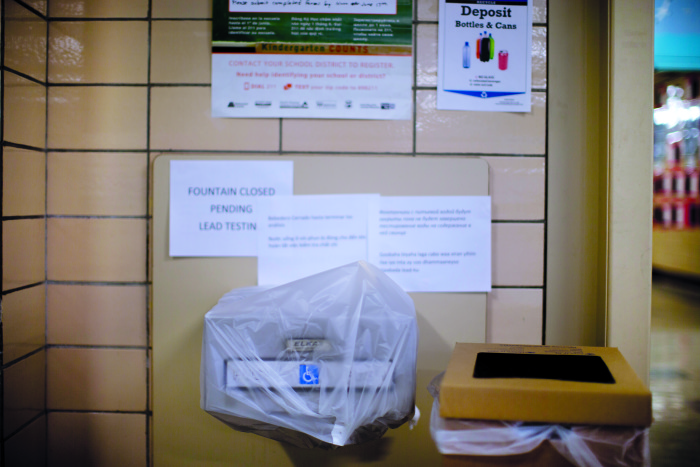| Department of Agriculture |
Secretary |
Sonny Perdue |
Y |
Georgia governor and state senator. D.V.M., University of Georgia. |
| Department of Agriculture |
Under secretary for food safety |
|
|
|
| Department of Agriculture |
Under secretary for natural resources and environment |
|
|
|
| Department of Agriculture |
Under secretary for research, education, and economics (commonly known as chief scientist) |
|
|
(Initial nominee Samuel Clovis Jr.—fighter pilot, defense contractor, and conservative radio host—withdrew after he was linked to the investigation of Trump campaign ties to Russia.) |
| Chemical Safety Board & Hazard Investigation Board |
Chairperson |
Vanessa Allen Sutherland |
Continuing five-year term from Obama administration |
Chief counsel for the Department of Transportation's Pipeline & Hazardous Materials Safety Administration. In-house counsel for Digex, Philip Morris, and Altria. B.A., political science and art history, Drew University; J.D. and M.B.A., American University. |
| Chemical Safety Board & Hazard Investigation Board |
Board member |
|
|
|
| Department of Commerce |
Secretary |
Wilbur Ross |
Y |
Investment banker known for purchasing failed companies and later selling them for a profit. A.B., English, Yale College; M.B.A., Harvard Business School. |
| Department of Commerce |
Under secretary for intellectual property and director of the U.S. Patent & Trademark Office |
Andrei Iancu |
|
Litigation and intellectual property attorney. B.S., aerospace engineering, M.S., mechanical engineering, and J.D., University of California, Los Angeles. |
| Department of Commerce |
Under secretary for oceans and atmosphere and administrator of the National Oceanic & Atmospheric Administration |
Barry Lee Myers* |
|
CEO of AccuWeather, which was founded by his brother. Former professor of business at Pennsylvania State University. B.S., business administration and economics, Pennsylvania State University; J.D., Boston University. |
| Department of Commerce |
Under secretary for standards and technology and director of the National Institute of Standards & Technology |
Walter Copan |
Y |
CEO of Intellectual Property Engineering Group. Formerly worked in technology transfer at the National Renewable Energy Laboratory and Brookhaven National Laboratory. Also worked at Clean Diesel Technologies and Lubrizol. B.S., chemistry, B.A., music, and Ph.D., chemistry, Case Western Reserve University. |
| Department of Commerce |
Assistant secretary for environmental observation and prediction |
Neil Jacobs |
|
Chief atmospheric scientist at Panasonic Avionics. B.S., mathematics and physics, University of South Carolina; M.S., air-sea interaction, and Ph.D., numerical modeling, North Carolina State University. |
| Department of Commerce |
Assistant secretary for oceans and atmosphere |
Timothy Gallaudet |
Y |
Navy oceanographer who served for 32 years and reached the rank of rear admiral. Commander of the Naval Meteorology & Oceanography Command. B.S., oceanography, Naval Academy; M.S. and Ph.D., oceanography, Scripps Institution of Oceanography. |
| Department of Defense |
Secretary |
James Mattis |
Y |
Served in the Marine Corps for 42 years, rising to the rank of general. B.A., history, Central Washington University; M.A., international security affairs, National War College. |
| Department of Defense |
Under secretary for research and engineering |
Michael Griffin* |
|
CEO of Schafer. Administrator of the National Aeronautics & Space Administration under President George W. Bush. Worked earlier at NASA as well as In-Q-Tel and Orbital Sciences. B.S., physics, Johns Hopkins University; master's degrees in aerospace science, electrical engineering, applied physics, civil engineering, and business administration from multiple schools; Ph.D., aerospace engineering, University of Maryland. |
| Department of Defense |
Assistant secretary for nuclear, chemical, and biological defense programs |
Guy B. Roberts |
Y |
National security consultant. Former deputy assistant secretary general for weapons of mass destruction policy and director of the Nuclear Policy Planning Directorate for the North Atlantic Treaty Organization. Served in the Marine Corps for 25 years in legal positions. B.A., political science, Arizona State University; master's degrees in international and comparative law, international relations, and strategic studies from multiple schools; J.D., University of Denver. |
| Department of Defense |
Assistant secretary for energy, installations, and environment |
Lucian Niemeyer |
Y |
National defense consultant. Previously served as a staff member of the U.S. Senate Committee on Armed Services. Served in the Air Force for 15 years. Bachelor of architecture, University of Notre Dame; M.B.A., George Washington University; M.A., national security and strategic studies, Naval War College. |
| Department of Defense |
Assistant secretary for research and engineering |
|
|
|
| Department of Energy |
Secretary |
Rick Perry |
Y |
Governor of Texas. Texas state representative and agriculture commissioner. Cotton farmer. B.S., animal science, Texas A&M University. |
| Department of Energy |
Under secretary of energy |
Mark Menezes |
Y |
Vice president of federal relations at Berkshire Hathaway Energy. Attorney specializing in energy matters. Previously served on House Committee on Energy & Commerce. B.A. and J.D., Louisiana State University. |
| Department of Energy |
Under secretary for science |
Paul Dabbar |
Y |
Led energy sector mergers and acquisitions at J.P. Morgan. B.S., marine engineering, Naval Academy; M.B.A., Columbia University. |
| Department of Energy |
Assistant secretary for energy efficiency and renewable energy |
|
|
|
| Department of Energy |
Assistant secretary for environmental management |
Anne White |
|
Consultant on nuclear regulatory issues, waste management, and environmental restoration. B.S., mathematics, University of Kansas; M.S., nuclear engineering, University of Missouri, Columbia. |
| Department of Energy |
Assistant secretary for fossil energy |
Steven Winberg |
Y |
Program manager at Battelle Memorial Institute. Vice president for R&D at Consol Energy. Also worked for Foster Wheeler and Consolidated Natural Gas. B.S., nuclear science, State University of Maritime College; M.B.A., University of Pittsburgh. |
| Department of Energy |
Assistant secretary for nuclear energy |
|
|
|
| Department of Energy |
Director of the office of science |
|
|
|
| Environmental Protection Agency |
Administrator |
Scott Pruitt |
Y |
Oklahoma attorney general and state senator. As attorney general, repeatedly sued EPA. B.A., political science and communications, Georgetown College; J.D. University of Tulsa. |
| Environmental Protection Agency |
Assistant administrator for water |
David Ross |
Y |
Wisconsin assistant attorney general and director of the Wisconsin Department of Justice's Environmental Protection Unit. Attorney focusing on environment, energy, and natural resources. B.A., international relations, University of Wisconsin, Madison; J.D. and master of environmental law and policy, Vermont Law School. |
| Environmental Protection Agency |
Assistant administrator for air and radiation |
William Wehrum |
Y |
Attorney specializing in air quality issues. Previously served in EPA under President George W. Bush. B.S., chemical engineering, Purdue University; J.D., Widener University. |
| Environmental Protection Agency |
Assistant administrator for chemical safety and pollution prevention |
|
|
(Initial nominee Michael Dourson withdrew amid growing concerns about his ties to the chemical industry.) |
| Environmental Protection Agency |
Assistant administrator for enforcement and compliance assurance |
Susan Bodine |
Y |
Chief counsel for U.S. Senate Committee on Environment & Public Works. Attorney focused on environmental law. Previously served in EPA and on House Committee on Transportation & Infrastructure. A.B., history, Princeton University; J.D., University of Pennsylvania. |
| Environmental Protection Agency |
Assistant administrator for environmental information |
|
|
|
| Environmental Protection Agency |
Assistant administrator for research and development |
|
|
|
| Environmental Protection Agency |
Assistant administrator for solid waste and emergency response |
|
|
|
| Department of Health & Human Services |
Secretary |
Alex Azar* |
|
Led Eli Lilly & Co.'s U.S. operations. Previously served in the Department of Health & Human Services as deputy secretary and general counsel. B.A., government and economics, Dartmouth College; J.D., Yale University. (Azar would replace Tom Price, who resigned for use of noncommercial planes for government travel.) |
| Department of Health & Human Services |
Commissioner of Food & Drug Administration |
Scott Gottlieb |
Y |
Partner focused on health care and medical devices at venture capital firm New Enterprise Associates. Resident fellow at conservative think tank American Enterprise Institute. Previously served as FDA deputy commissioner for medical and scientific affairs and in the Centers for Medicare & Medicaid Services. B.A., economics, Wesleyan University; M.D., Mount Sinai School of Medicine. |
| Department of Health & Human Services |
Director of the National Institutes of Health |
Francis Collins |
Continuing from Obama administration |
Led the National Human Genome Research Institute. Professor of internal medicine and human genetics at the University of Michigan. B.S., chemistry, University of Virginia; Ph.D., chemistry, Yale University; M.D., University of North Carolina, Chapel Hill. |
| Department of Health & Human Services |
Director of the Centers for Disease Control & Prevention |
Brenda Fitzgerald |
Not required |
Commissioner of Georgia's Department of Public Health. Worked in private practice as an obstetrician-gynecologist. B.S., microbiology, Georgia State University; M.D., Emory University. |
| Department of Homeland Security |
Secretary |
Kirstjen Nielsen |
Y |
National security consultant. Served on President George W. Bush's homeland security council and worked at the Transportation Security Administration. B.S., Georgetown University; J.D., University of Virginia. (Nielsen replaced John Kelly after he resigned to become Trump's chief of staff.) |
| Department of Homeland Security |
Under secretary for science and technology |
|
|
|
| Department of the Interior |
Secretary |
Ryan Zinke |
Y |
U.S. senator for Montana, before which he was Montana state senator. Served as a Navy SEAL for 23 years, reaching the rank of commander. B.S., geology, University of Oregon; M.B.A., National University; M.S., global leadership, University of San Diego. |
| Department of the Interior |
Assistant secretary for land and minerals management |
Joseph Balash |
Y |
Chief of staff to U.S. Sen. Dan Sullivan of Alaska. Commissioner of the Alaska Department of Natural Resources. Also held staff positions in the Alaska governor's office and state legislature. B.A., government and politics, Pacific University. |
| Department of the Interior |
Assistant secretary for water and science |
Timothy Petty |
Y |
Deputy legislative director for U.S. Sen. James Risch of Idaho, a member of the Senate Committee on Energy & Natural Resources. Served in the Department of Interior under President George W. Bush. Also served in staff positions for U.S. senators from Florida and Pennsylvania. B.S., geosciences, Purdue University; M.S., executive international business management, University of Maryland University College; Ph.D., water and science policy, University of Alaska, Fairbanks. |
| Department of the Interior |
Director of U.S. Geological Survey |
|
|
|
| Department of Justice |
Attorney general |
Jeff Sessions |
Y |
U.S. senator for Alabama, Alabama attorney general, and U.S. attorney for the Southern District of Alabama. Served in the Army Reserve for 13 years, reaching the rank of captain. B.A., history, Huntingdon College; J.D., University of Alabama. |
| Department of Justice |
Administrator of Drug Enforcement Administration |
|
|
|
| Department of Justice |
Deputy administrator of Drug Enforcement Administration |
|
|
|
| Department of Justice |
Assistant attorney general of the environment and natural resources division |
Jeffrey Bossert Clark* |
|
Litigator specializing in environmental and administrative law. Previously served as deputy assistant attorney general for the same division. A.B., economics and history, Harvard University; M.A., urban affairs and public policy, University of Delaware; J.D., Georgetown University. |
| Department of Labor |
Secretary |
Alexander Acosta |
Y |
Dean of Florida International University College of Law. Formerly served in three Senate-confirmed positions: member of the National Labor Relations Board, assistant attorney general for the Department of Justice Civil Rights Division, and U.S. attorney for the Southern District of Florida. A.B., economics, and J.D., Harvard University. (Initial nominee Andrew Puzder withdrew after concerns emerged about his business record and personal life.) |
| Department of Labor |
Assistant secretary for occupational safety and health and administrator of the Occupational Safety & Health Administration |
Scott A. Mugno* |
|
Worked at FedEx since 1994, starting as an attorney and moving up to vice president for safety, sustainability, and vehicle maintenance for FedEx Ground. B.S., criminal justice, St. John's University; J.D., Washburn University School of Law. |
| Department of Labor |
Commissioner of the Bureau of Labor Statistics |
William Beach* |
|
Vice president for policy research at the Mercatus Center, an economics research center at George Mason University. Previously served as the chief economist for the Republican staff of the Senate Budget Committee and as director of the Heritage Foundation's Center for Data Analysis. B.A, history and economics, Washburn University; M.A., history and economics, University of Missouri, Columbia; Ph.D., economics, Buckingham University. |
| National Aeronautics & Space Administration |
Administrator |
James Bridenstine* |
|
U.S. congressman from Oklahoma. Executive director of the Tulsa Air & Space Museum & Planetarium. Served in the Navy and Navy Reserve, reaching the rank of lieutenant commander. B.A., economics, psychology, and business, Rice University; M.B.A., Cornell University. |
| National Aeronautics & Space Administration |
Deputy administrator |
|
|
|
| National Science Foundation |
Director |
France Córdova |
Continuing six-year term from Obama administration |
President of Purdue University, chancellor of the University of California, Riverside, and vice chancellor for research at the University of California, Riverside. Professor of astronomy and astrophysics at Pennsylvania State University. NASA chief scientist. B.A., English, Stanford University; Ph.D., physics, California Institute of Technology. |
| Office of Science & Technology Policy |
Director |
|
|
|
| Office of Science & Technology Policy |
Associate director for environment |
|
|
|
| Office of Science & Technology Policy |
Associate director for science |
|
|
|
| Office of Science & Technology Policy |
Associate director for technology |
|
|
|
| Office of Science & Technology Policy |
Associate director for national security and international affairs |
|
|
|
| Department of State |
Secretary |
Rex Tillerson |
Y |
Began his career as a production engineer at Exxon and rose through the ranks to become CEO of ExxonMobil. B.S., civil engineering, University of Texas, Austin. |
| Department of State |
Under secretary for economic growth, energy, and environment |
|
|
|
| Department of State |
Assistant secretary for energy resources |
|
|
|
| Department of State |
Assistant secretary for oceans and international, environmental, and scientific affairs |
|
|
|
| Department of Transportation |
Secretary |
Elaine Chao |
Y |
Fellow at conservative think tank the Hudson Institute. Served as secretary of labor under President George W. Bush. President and CEO of United Way of America. Also worked in the Department of Transportation under George H. W. Bush, as well as BankAmerica and Citicorp. B.A., economics, Mount Holyoke College; M.B.A., Harvard University. |
| Department of Transportation |
Assistant secretary for research and technology |
Diana Furchtgott-Roth* |
|
Director of Economics21, the economics arm of the Manhattan Institute for Policy Research. Formerly chief economist of the Department of Labor under George W. Bush. Also served Presidents George H. W. Bush and Ronald Reagan in various roles. B.A., economics, Swarthmore College; M.Phil., economics, Oxford University. |
| Department of Transportation |
Administrator of Pipeline & Hazardous Materials Safety Administration |
Howard (Skip) Elliott |
Y |
Vice president of public safety, health, environment, and security at rail services company CSX Transportation. B.A., English and forensic studies, Indiana University; M.S., criminal justice administration, Columbia Southern University. |


















